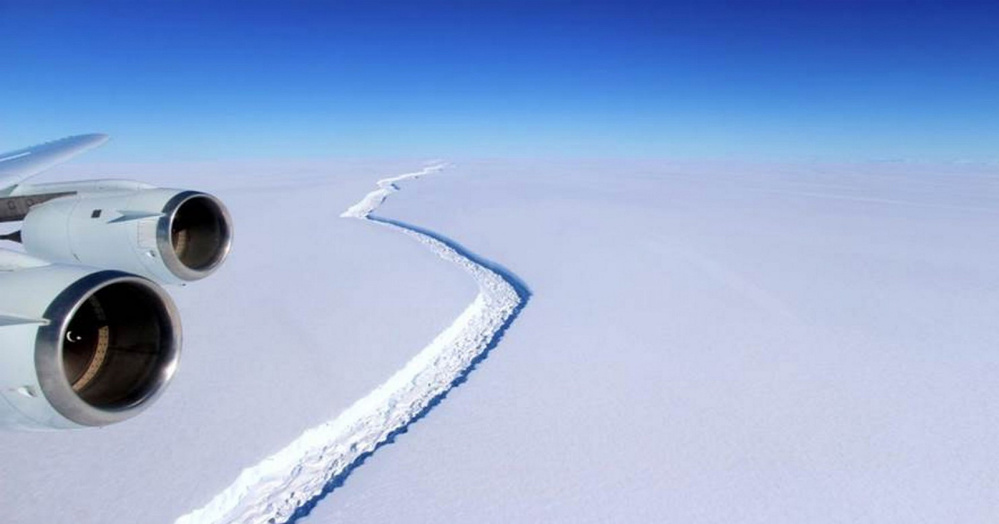Another branch has appeared in a huge crack on one of Antarctica’s largest ice shelves, and scientists fear it’s only a matter of time before a huge chunk – potentially containing up to 2,000 square miles of ice – breaks away. If this happens, the ice shelf may become increasingly unstable and could even fall apart.
Scientists have been closely monitoring the Larsen C ice shelf, located on the east coast of the Antarctic Peninsula, where a large rift in the ice – now about 111 miles long – has been advancing in rapid bursts in recent years. Between the beginning of December and the middle of January alone, the crack lengthened by about 17 miles. And since 2011, it has grown by about 50 miles.
Over the past few months, scientists have noticed that the crack has stopped extending in length but has continued to widen at a rate of more than three feet per day. It’s already more than 1,000 feet wide.
And now, scientists have noticed a worrying development: A new branch has split off from the main rift, about six miles below the tip of the original crack, and has splintered off in the direction of the ocean. The new branch is about nine miles long. Altogether, only about 12 miles of ice now stand in the way of the whole chunk splitting off into the sea.
Researchers from Project Midas, a U.K.-based Antarctic research project based at Swansea University and Aberystwyth University, observed the new crack in satellite images on May 1.
The biggest concern is not whether the chunk will break off – that seems to be inevitable at this point – but what will happen after it does. The break will sweep away about 10 percent of the ice shelf’s total area, and scientists have previously speculated that the shelf will become increasingly unstable after this point.
“We have previously shown that the new configuration will be less stable than it was before the rift, and that Larsen C may eventually follow the example of its neighbor Larsen B, which disintegrated in 2002 following a similar rift-induced calving event,” Swansea University professor Adrian Luckman, a leader at Project Midas, said in a statement.
Larsen B was a nearby ice shelf that came to a sudden and dramatic end in 2002 after particularly warm Antarctic summers that caused the ice to melt and splinter. Ultimately, more than 1,200 square miles of ice collapsed over the course of just one month. Another neighbor, Larsen A, collapsed in 1995.
The collapse of Larsen C, should it occur, has the potential to unleash enough ice to raise sea levels by, at most, about a centimeter.
The ice shelf itself – which can be thought of as a kind of floating ledge jutting out from the edge of the continent – is resting on the surface of the ocean and wouldn’t contribute to any sea-level rise by itself if it were to break off. But ice shelves generally serve as a kind of stopper at the edges of glaciers, stabilizing and containing all the ice behind them. When they break, they have the potential to unleash a flood of ice from the continent that can significantly contribute to rising sea levels.
Whether this is what happens at Larsen C remains to be seen. For now, continued close monitoring will be the key.
In January, some scientists speculated that a calving event could occur within a year – meaning it may not be long before the region’s destiny becomes clear. In any case, Luckman noted in his statement that the event, when it happens, is likely to “fundamentally change the landscape of the Antarctic Peninsula.”
Send questions/comments to the editors.



Success. Please wait for the page to reload. If the page does not reload within 5 seconds, please refresh the page.
Enter your email and password to access comments.
Hi, to comment on stories you must . This profile is in addition to your subscription and website login.
Already have a commenting profile? .
Invalid username/password.
Please check your email to confirm and complete your registration.
Only subscribers are eligible to post comments. Please subscribe or login first for digital access. Here’s why.
Use the form below to reset your password. When you've submitted your account email, we will send an email with a reset code.